8MechCx
Transforming an Existing MOOC into a High-school oriented MOOC
Chris Chudzicki
July 29th, 2015
RELATE Group, MIT
PI: Prof David E Pritchard
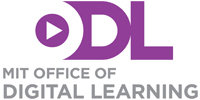


This Talk
-
8MechCx: Advanced Introductory Classical Mechanics
- geared toward high school students (AP Physics C)
- a MOOC 6 years in the making
- our students
- evidence of learning in our MOOCs
-
Virtual Labs
- Direct Measure Videos
- Custom tools for use in edX
- Custom Courses on edX ("CCX")

8MechCx
Advanced Introductory Classical Mechanics
- 8 = Physics
- Calculus-based Introductory Physics MOOC on edx.org
January–May, 2015 - aimed at students interested in AP Physics C: Mechanics
aligned with AP Physics C: Mechanics curriculum - Each week:
- instruction + checkpoint problems, 10%
- virtual lab activity, 10%
- homework, 35%
- quiz, 35%
- final exam: 10%
- Instructors:

Prehistory of 8MechCx
- 8MechCx: Advanced Introductory Classical Mechanics 5th intro physics MOOC by MIT's RELATE group
- Previous MOOCs
- Mechanics Online (2012; LON-CAPA)
- 8MReVx: Mechanics ReView (2013, 2014; edX)
- teacher–oriented: 18% of 8MReV survey respondents identify as physics teachers
- Much of material developed for 3-week MIT review course
- Many course authors (past RELATE group members):
Saif Rayyan, Analia Barantes, Raluca Teoderescu, Andrew Pawl, Colin Fredericks, Daniel Seaton, ...
Why re-orient toward AP Physics C?
- a first step toward sharing our resources directly with teachers
- Declining enrollment in previous MOOCs:
maybe high school a "renewable" population?
Re-orienting Our MOOC toward AP
- Thorough course review by AP teacher Boris
Korsunsky, author of edX course "On-Ramp to
AP Physics C"
- Together with Boris:
- added scaffolding to many problems
- energy: 1 week→2 weeks
- filled content holes (e.g., drag forces)
- add virtual lab activities
- new AP-review unit
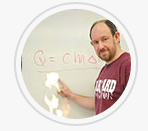

8MechCx Content
- 1100+ problems, many with multiple related parts
- 1000+ choice-based (MC, checkbox, ...) largely conceptual
- 300+ symbolic response
- 400+ numerical response
- Most instruction is textual, including ~100 worked examples

other problem types, too...
Examples and solutions use approach "Modeling Applied to Problem Solving" (MAPS)
- Modeling Applied to Problem Solving, PERC Proceedings 2009
- Improved Student Performance In Electricity And Magnetism Following Prior MAPS Instruction In Mechanics, PERC Proceedings 2010
What We Want Students to Learn
- Begin to think like experts:
- Organize mechanics knowledge around core models
e.g., Mechanical Energy and non-conservative work - understand and apply conditions of applicability
e.g., mechanical energy constant when
- Organize mechanics knowledge around core models
-
Solve, not just answer:
- use systematic approach to begin a solution
- be able to plan solutions
- check if answers sensible
Modeling Applied to Problem Solving addresses these goals
Models: Organize basic principals
- instructor generated
- hierarchical
- each Model has allowable systems, associated variables, restriction on interactions
Modeling: problem-solving process
- student-constructed
- apply content knowledge
- SIM: System, Interactions, Model
MAPS
Modeling Applied to Problem Solving
Student Statistics
Final Grade >= 60%
required for certificate
- Entrance Survey:
- 273 users (15%) "AP exam as somewhat/extremely important"
- 10% of these earned certificates
Registrant Ages
8MReV (2014)
8MechCx (2015)
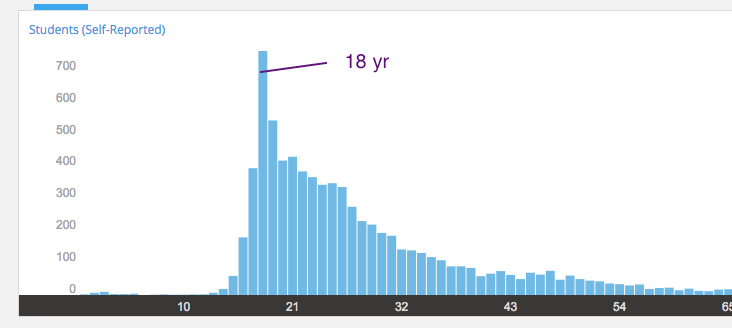


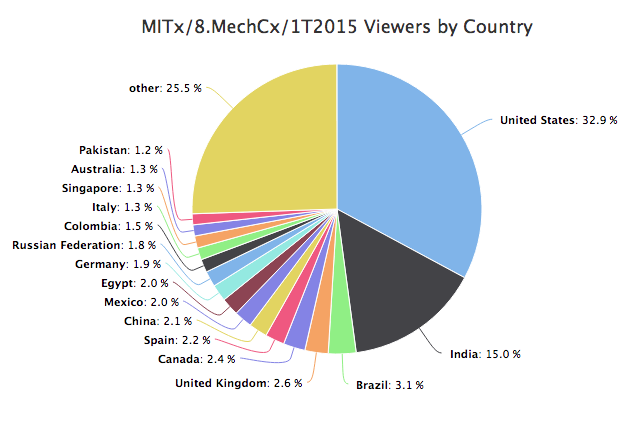
Countries
Problem Checks

Evidence of Learning
- Pre-test and Post-test
- Pre-test is ungraded
- includes questions from Mechanics Baseline Test and Mechanics Reasoning Inventory
- normalized gain: fraction of stuff you didn't know that you managed to learn
- for 8MechCx, normalized gain 32% ± 2.5%
similar to our previous MOOCs
Learning by Cohort
419 students, force related items
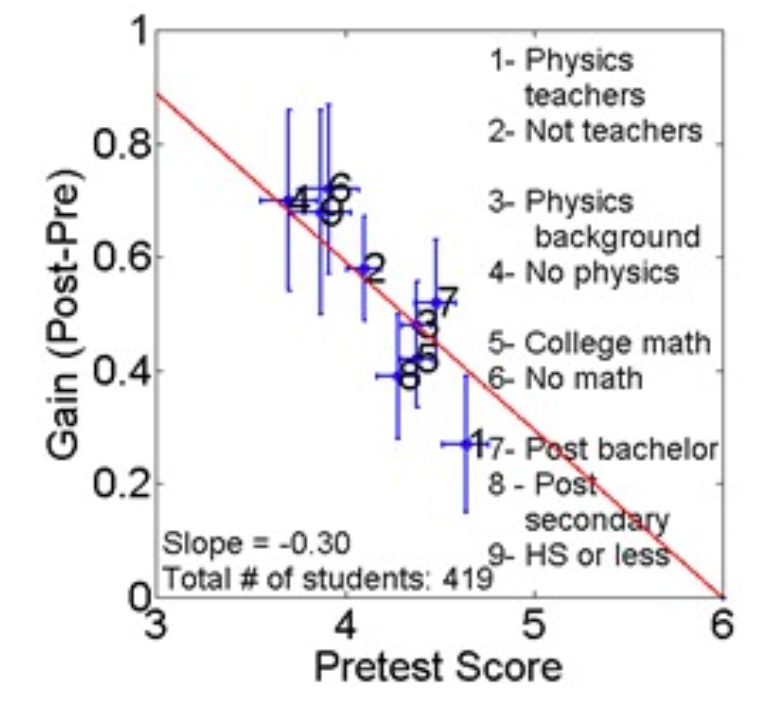
Learning in an introductory physics MOOC: All cohorts learn equally, including an on-campus class, IRRODL (2014)
419 students, force related items
Virtual
Lab Activities
Virtual Lab Goals
- Build Skills
- Model real systems
- Confront non-idealizations (sources of error)
- Collect and analyze data
- design experiments
- Build conceptual understanding
Also, our virtual labs should:
- feel authentic
- all required lab activities should be graded
Direct Measurement Videos
(DMVs)
High speed, high quality videos of real events created by Peter Bohacek and his students at Henry Sibley High School, MN.
DMVs
Students decide what to measure:
- overlaid or draggable rulers and protractors
- frame counter
play frame-by-frame in HTML5 custom DMV player
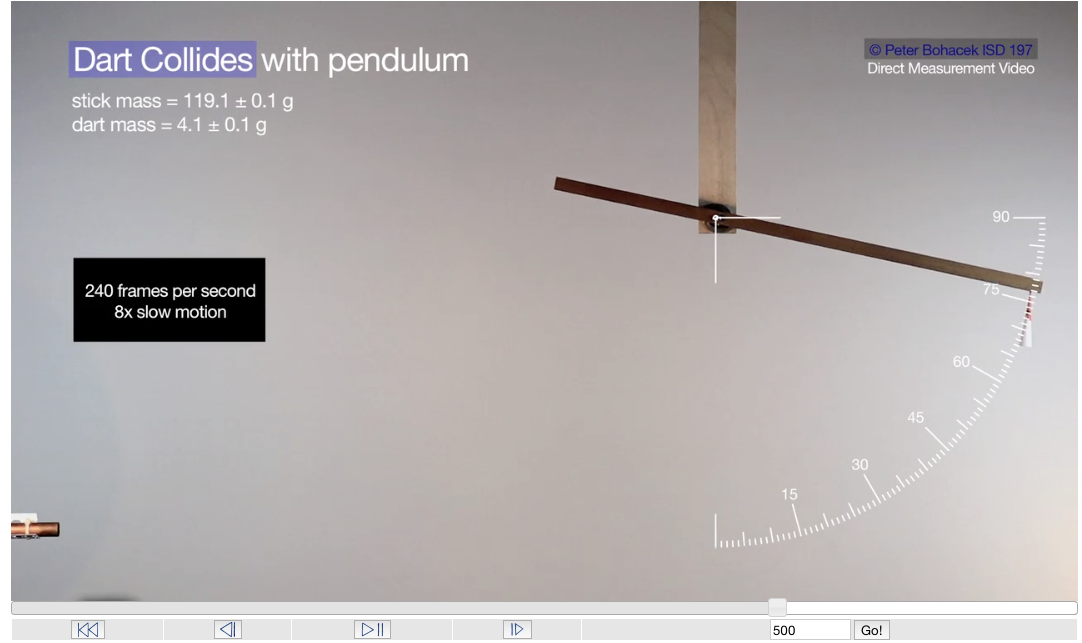
Desirable imperfection and ambiguity:
- friction, cannon's air blast
- how to measure angle? dart+stick is extended
DMVs high quality:
- can attribute theory/practice discrepancy to non-ideal behavior, rather than measurement error
Example 1: Physical Ballistic Pendulum

- Warm-up: determine initial speed
- Write a plan to predict max angle
(open response, peer assessment) -
Scaffolded: make measurements, predict max angle, compare to measurement
Grading: mostly use edX "custom response":
- extremely flexible grader
- we grade for consistency more than
correctness - many attempts
- downside: author effort
- upside: detailed adaptive wrong-answer feedback to students helps avoid frustration, promote learning
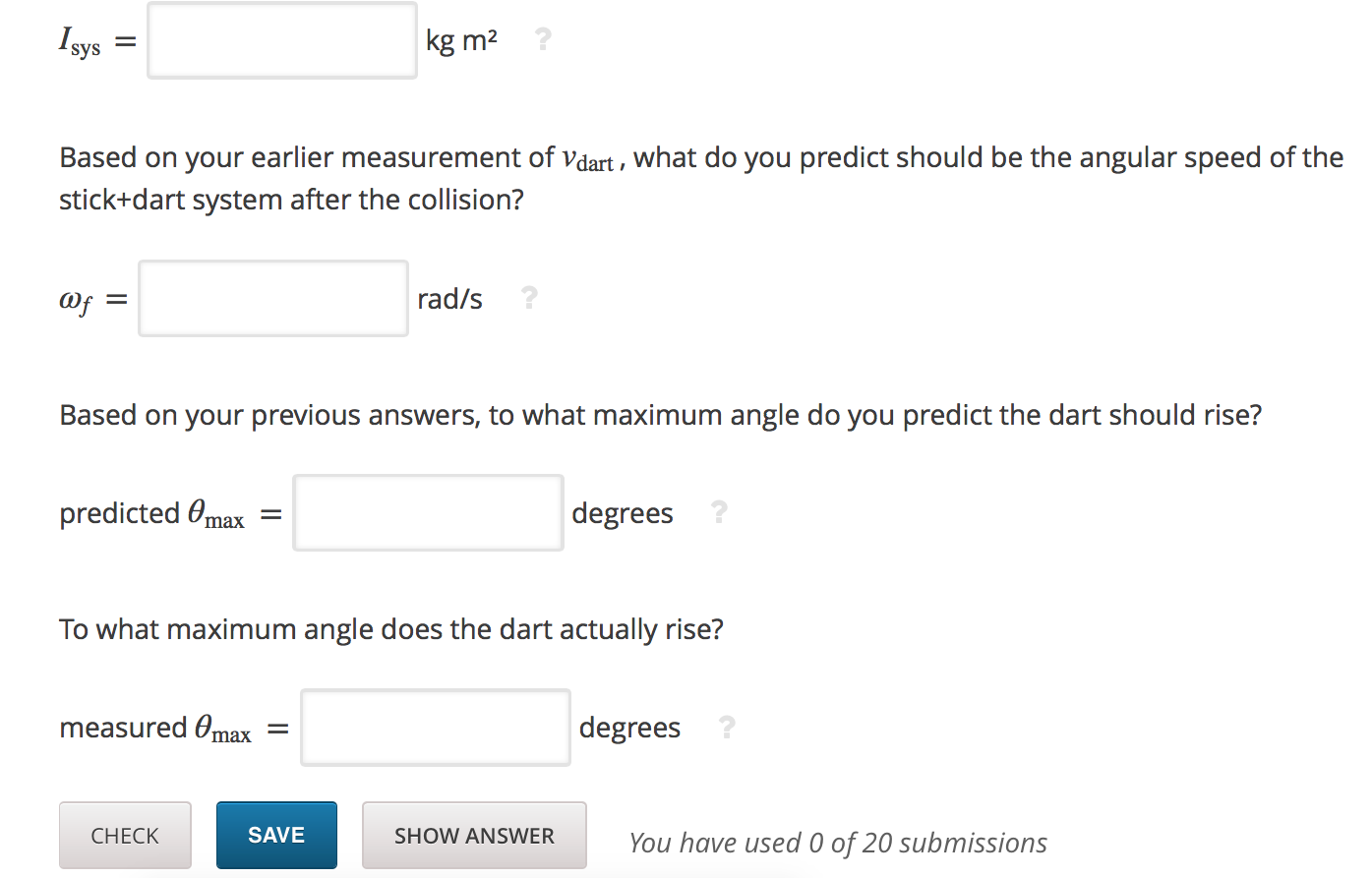
Graphical Analysis
- Important data analysis skill
- Many DMVs lend themselves well to graphical activities
- custom plotter tool and graders
- data entry
- display
- curve fitting
- graded for rough correctness, with lots of feedback
- grading for subsequent problems based on student's fit (regression coefficients, etc).
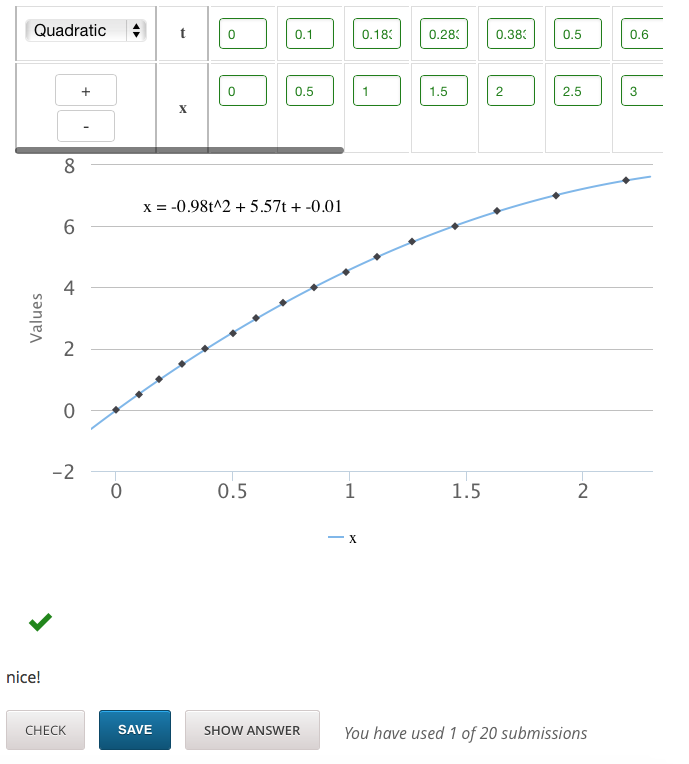
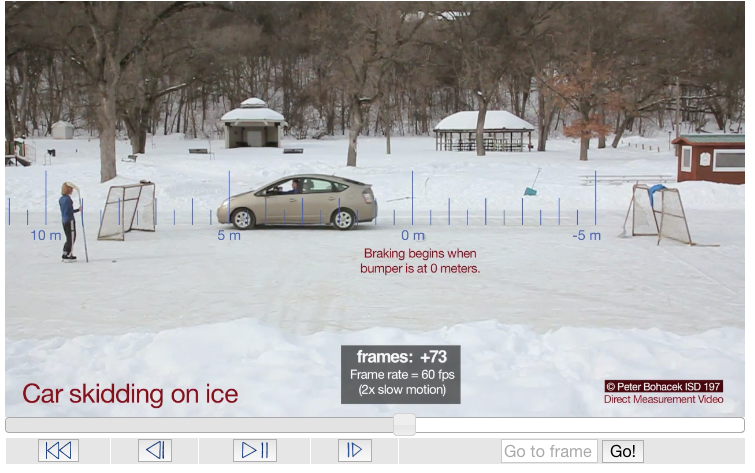
Multi-Video DMVs
- User can adjust video parameters to explore relationships
powerful with graphical analysis!
user controls fan force, explores
One More Example
One More Example
Advertisement:
Direct Measurement Videos (DMV) available at
http://serc.carleton.edu/sp/library/dmvideos
(just google "serc dmv")
Lab Retrospective
-
Highly rated on exit survey
-
25% respondents explicitly mention labs as a "favorite aspect of course"
-
-
What we did well:
- DMV feel authentic
- embedded graphical analysis
- sophisticated, automatic grading
- detailed feedback to learner
-
To improve:
- graph (or measure?) velocity
- Challenge: Can we incorporate more open-ended activities?
Mini MOOCS
Custom Courses
(CCX)
Custom Courses on edX
- Goal: share MOOC resources with teachers
- Built by MIT for edX
- First version:
- Live on edge.edx.org
- Coming to main edx.org site soon
Custom Courses on edX

MOOC staff can grant "Coach" priveleges
Coaches can customize their course:
- set schedule (release/due dates)
- skip/hide unwanted content
- edit grading policy
- view student grades
Coaches unable to edit content
Coach Dashboard
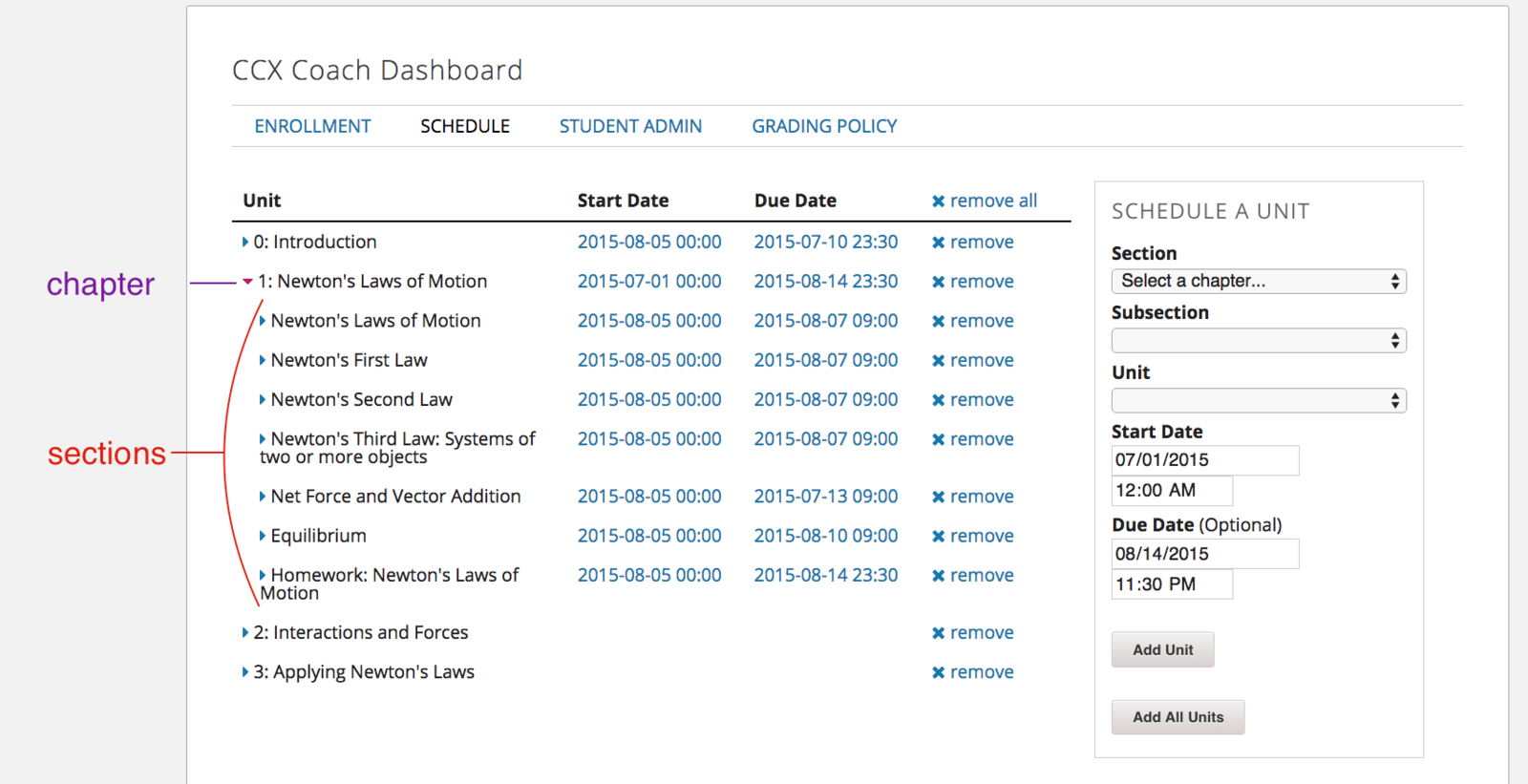
Text
Edit schedule at any level of granularity
Recap
-
8MechCx: Advanced Introductory Classical Mechanics Calculus based intro physics at level of AP Phys C
- Summer version live now:
google "edx mit intro physics"
- virtual lab activities
- edX Custom Courses
- RELATE group interested in sharing 8MechCx Materials via custom courses. (Can't sure DMV labs)
Please email us if interested!
- RELATE group interested in sharing 8MechCx Materials via custom courses. (Can't sure DMV labs)
relateMIT@gmail.com